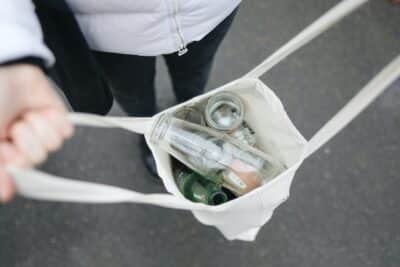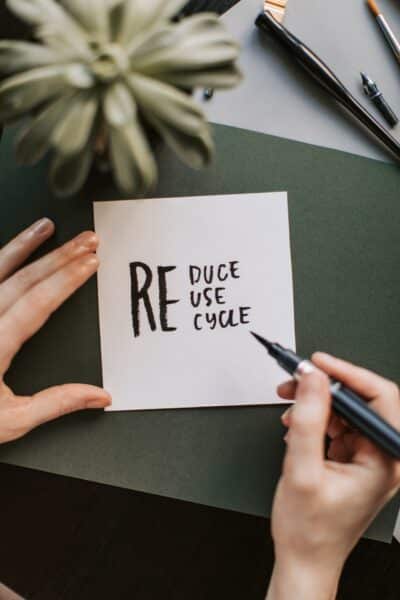Bondi is an area of Sydney recognized for its breathtaking beach and clear ocean where people enjoy surfing and other water activities, not to mention the many restaurants and attractions throughout the beach town surrounding Sydney. It’s one area no one wants to see litter or trash strewn around the lovely communities and neighborhoods, where rubbish experts encourage recycling and proper waste disposal.
Reputable and quality removal companies like you’ll find at https://www.ridly.com.au/ lend their services to residents and business owners to keep the areas pristine for locals and visitors by removing junk and waste for recycling or disposal.
Why should recycling be a priority in people’s minds? Because everyone wants areas throughout Australia and worldwide to be environmentally clean and healthy in the same way they do with Bondi.

IMAGE: PEXELS
When waste is collected and processed to be repurposed instead of being sent off to the landfill, these dump sites can start to be cleaned up, and rubbish can be made into fresh, new products for reuse. Let’s look at recycling, so you can become more informed and make wise decisions with your household waste.
Recycling In Bondi
In Bondi, the beach, fresh, vibrant air, outside water activities, and entertaining attractions draw people in. None of these things would be as wonderful if the surrounding neighbourhoods and communities were strewn with waste, debris, and junk. Click for details on waste reduction efforts on Bondi Beach.
Fortunately, experts are available for residents and business owners to remove rubbish for either recycling of the materials or waste disposal. Many of these companies are environmentally driven, prioritizing recycling to protect the planet from overwhelmed landfills.
The more people recycle, the less waste ends up in landfills or places where it shouldn’t be. Recycling has the potential to preserve natural resources. While Australia as a whole makes an effort to recycle, everyone can work together to do much better, and rubbish removal teams help with that process. How does it work?
- The junk or rubbish is collected, and the materials are separated into recyclables and waste.
- The recycling facility reverts the materials back into their raw form.
- Raw materials can then be made into fresh, clean, and new products.
What Are Common Recyclables
Learning what can and can’t be recycled takes some time. Some items you wouldn’t recognize as being able to be repurposed, but many things have the potential. With some things, the condition makes a difference. That’s especially true with cardboard; it shouldn’t be wet or caked with food. Typically, if the cardboard is found with food, staining, or water on the material, the recycling center will toss the piece out.
The suggestion for those trying to recycle cardboard is to cut off wet or stained sections. It takes considerable effort and is time-intensive, but once you get the hang of it, it eventually becomes a habit.
When calling for rubbish removal, the items are ready, allowing for a much more straightforward process for the team. Usually, when the process is easy, saving time and effort means cost savings for you. Let’s look at some items that can be recycled that you might not be aware of.
1. Paper
Any sort of paper, whether it’s credit card promotions you receive with the postal service, unwanted literature stuck in the door, copy paper, drawings on construction paper kids might have forgotten about and never finished, printer paper that jammed up, notes or lists for varied purposes. These can all be recycled for reuse in some other manner.
2. Cardboard
Standard cardboard like you would receive with online shopping packages, cereal or other prepackaged food items, shoe boxes, soda or other beverage cartons, paper towels or toilet tissue rolls, anything cardboard virtually, nothing wet or caked with food. Cutting off anything wet, stained, or saturated with food would be best because they’ll toss the whole section of cardboard otherwise.
3. Magazines/Newspapers
These are less common than they once were, but there are some in circulation. Plus, you’ll see brochures, flyers, newsletters, coupons, and menus that you might tuck away but never use; all these things are recyclable.
4. Metal
Aluminum cans are found everywhere. These never seem to make their way into a bin. These are for soda, beer, and juices. You can actually bring these in and make money on them. Companies will often pay as much as .10 cents for a can.
People are losing out by leaving these lying on the ground. Aluminum foil is in the same family, you won’t get paid, but it is recyclable in the same way. It’s also true of steel and tin which usually hold vegetables and fruits or beans. Before turning these in, the cans need to be rinsed out.
5. Glass
The glass comes in three distinctions, but these are based on color. The clear variation is referenced as “flint,” amber is, of course, a yellow-brown color, and the green glass is emerald. The most versatile and sought is clear from the recycling perspective, with amber being the least so because usually, it can only return to the same color albeit still recyclable.
6. Plastics
Plastic is a broad category with different variations that you’ll be able to identify as examples are given with each.
- Polyethylene terephthalate – PET: This is the primary category of plastics. Many items are classified here, including all plastic beverage and water containers. (Transparent)
- High-density polyethylene – HDPE: Plastic containers that hold items like milk, shampoo, conditioner, beauty supplies, and anything contained in a non-transparent plastic bottle.
- Other: These plastics include items that are usually colored and more of durable plastic, as you would find with plastic cutlery, straws, kids’ toys, bottle caps, and so much more.
What Goes In The Yellow Bins
The yellow recycling bin is the resource for some things recycling. But there are rules, dos, and don’ts if you will, of what can be put in the bin and what you are not permitted to put in there. Many people need clarification on the container, so some don’t use it because they don’t know. Let’s go over what goes in and what to avoid.
Put It In The Yellow Bin:
- Glass containers/bottles
- Non-perishable food containers and beverage cartons
- Flattened cardboard boxes – clean, not wet or caked with food.
- Newspapers/magazines, brochures, flyers, and paper
- Aluminum cans from beverages and foods
- Plastic containers and bottles
Keep These Things Out Of The Yellow Bin:
- Polystyrene plastic and foam
- Plastic-coated cups or cups coated in wax.
- Flexible packaging
- Plastic film or wrapping
- Plastic bags
- Bagged recyclables
Ways You Can Reduce Waste And Contribute To A Friendly And Sustainable Environment:
- Shop with reusable alternatives instead of accepting plastic bags, use totes.
- Bamboo is a biodegradable choice for substituting plastic for personal hygiene products, including toothbrushes, hairbrushes, and also for items like water bottles, drinking straws, and cutlery.
- Avoid putting recyclable items in rubbish bins or bags.
- Avoid putting waste in the yellow recycle bin.
- Look for the “recycle label” on items you buy, so you recognize what has been created from recycled materials.
- When taking a walk, pick up rubbish for disposal either in recycling or a waste bin.
- Your local rubbish removal team will drop items off at their contact recycling centers if you can’t dispose of specific things in your bin.
Rubbish removal specialists in Bondi and the surrounding Sydney areas are environmentally friendly. These teams encourage reducing waste, adequate rubbish disposal, and recycling whenever possible. Their crews help residents and business reduce their carbon footprint by removing their rubbish, loading it in their trucks, and hauling it to the recycling and waste management facilities.
The only thing you need to do is schedule your rubbish and junk to be removed. The team will handle everything else. These professionals make recycling and being conscious of the environment easy for you.

IMAGE: PEXELS
If you are interested in even more lifestyle-related articles and information from us here at Bit Rebels, then we have a lot to choose from.
COMMENTS